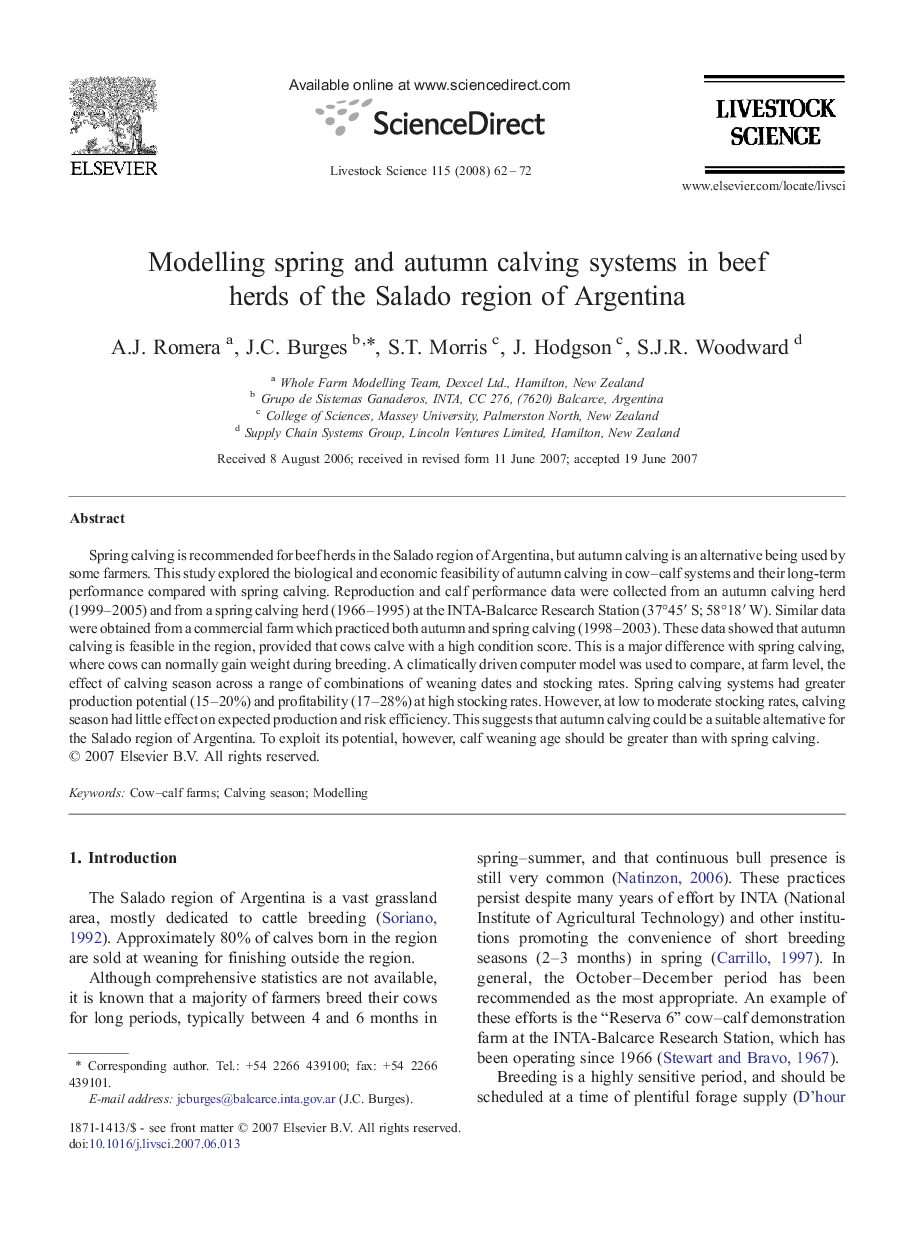| Article ID | Journal | Published Year | Pages | File Type |
|---|---|---|---|---|
| 2448541 | Livestock Science | 2008 | 11 Pages |
Spring calving is recommended for beef herds in the Salado region of Argentina, but autumn calving is an alternative being used by some farmers. This study explored the biological and economic feasibility of autumn calving in cow–calf systems and their long-term performance compared with spring calving. Reproduction and calf performance data were collected from an autumn calving herd (1999–2005) and from a spring calving herd (1966–1995) at the INTA-Balcarce Research Station (37°45′ S; 58°18′ W). Similar data were obtained from a commercial farm which practiced both autumn and spring calving (1998–2003). These data showed that autumn calving is feasible in the region, provided that cows calve with a high condition score. This is a major difference with spring calving, where cows can normally gain weight during breeding. A climatically driven computer model was used to compare, at farm level, the effect of calving season across a range of combinations of weaning dates and stocking rates. Spring calving systems had greater production potential (15–20%) and profitability (17–28%) at high stocking rates. However, at low to moderate stocking rates, calving season had little effect on expected production and risk efficiency. This suggests that autumn calving could be a suitable alternative for the Salado region of Argentina. To exploit its potential, however, calf weaning age should be greater than with spring calving.
